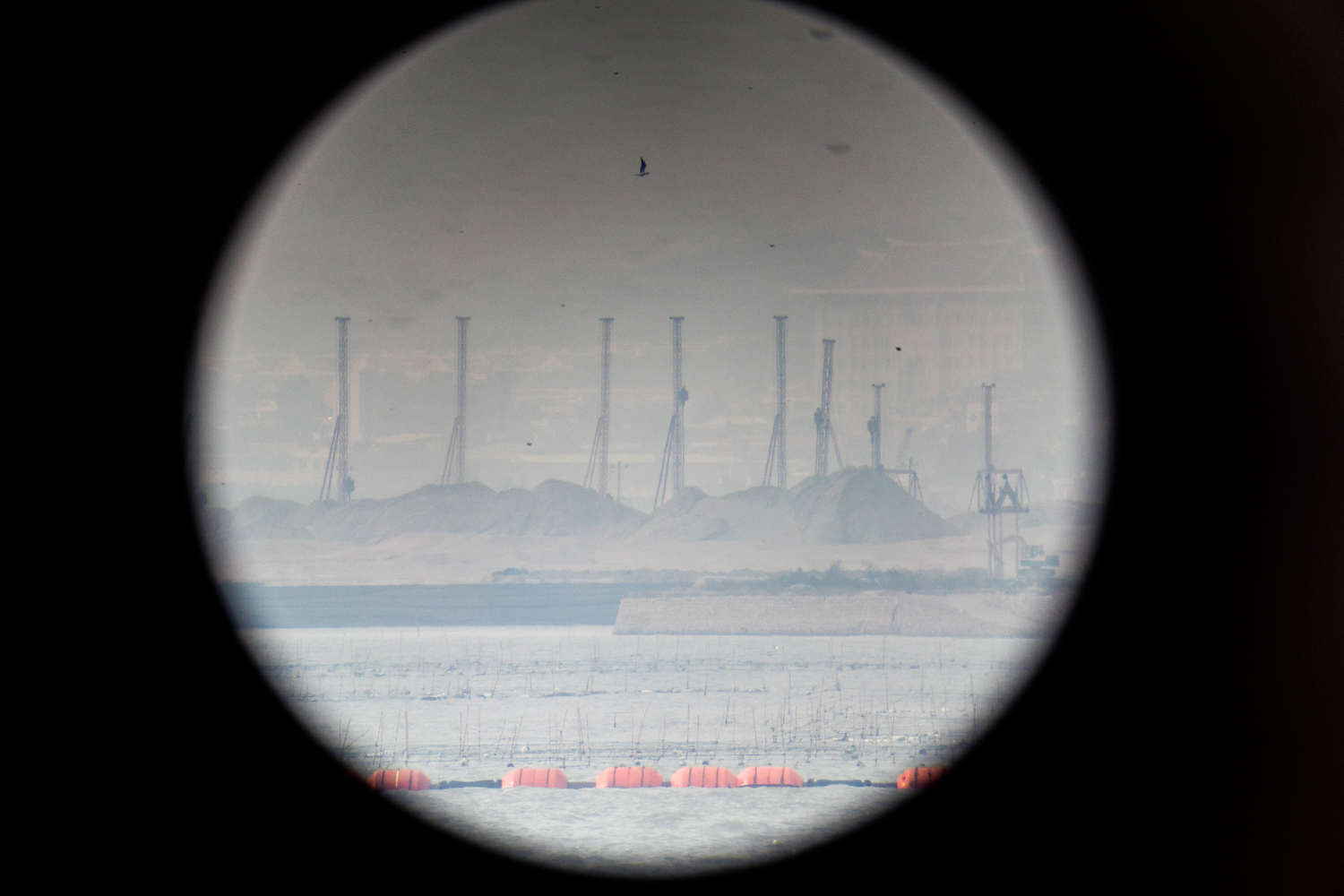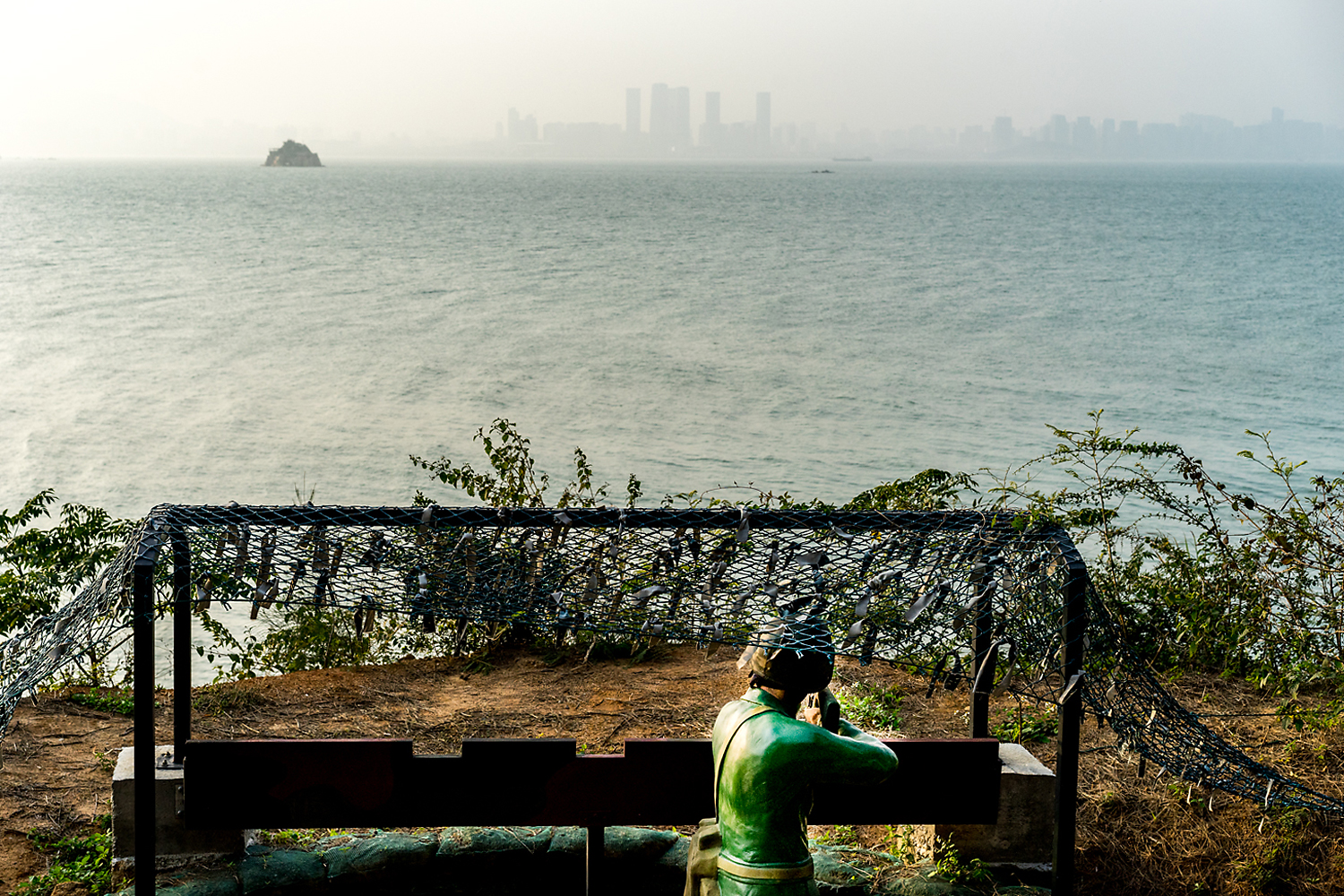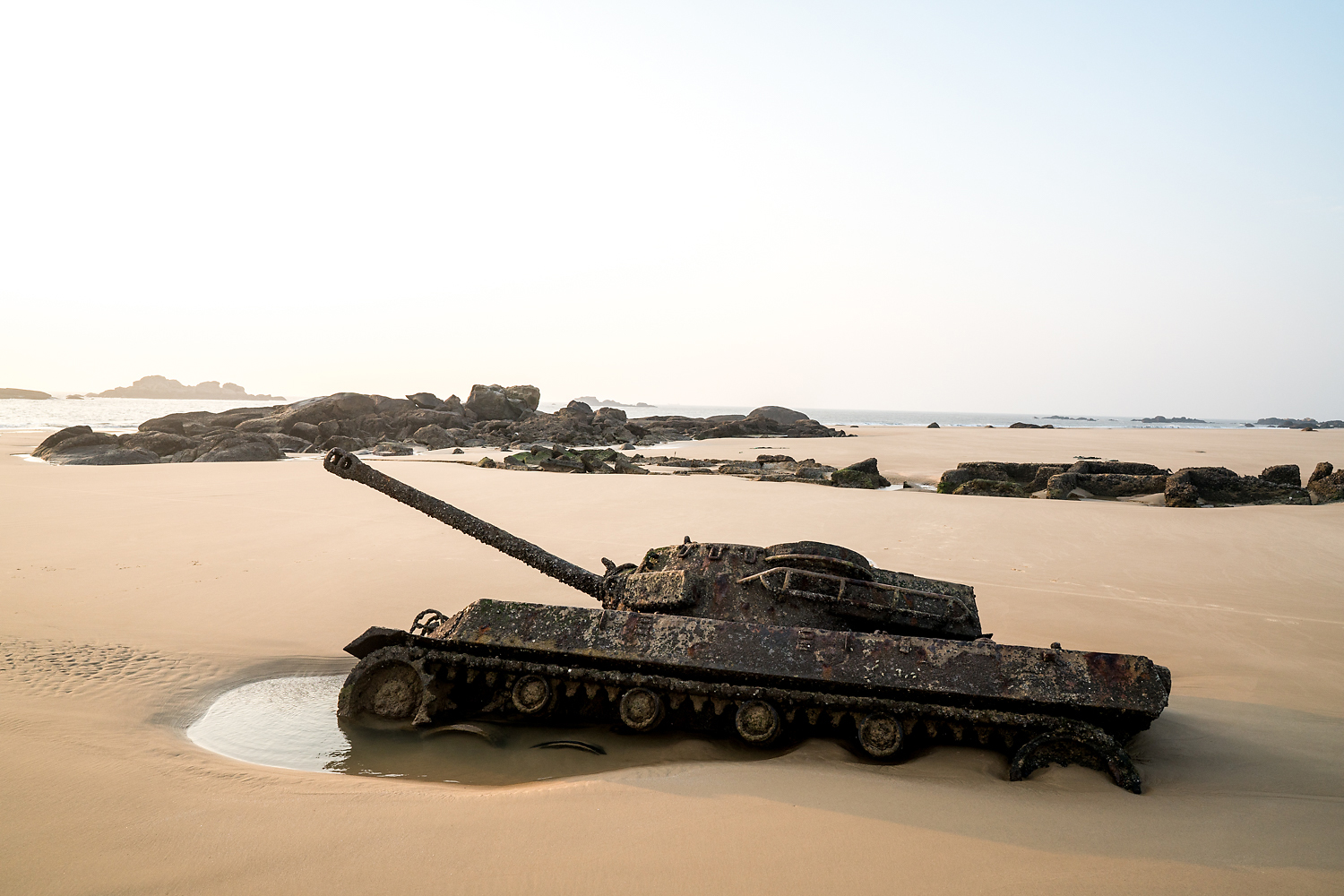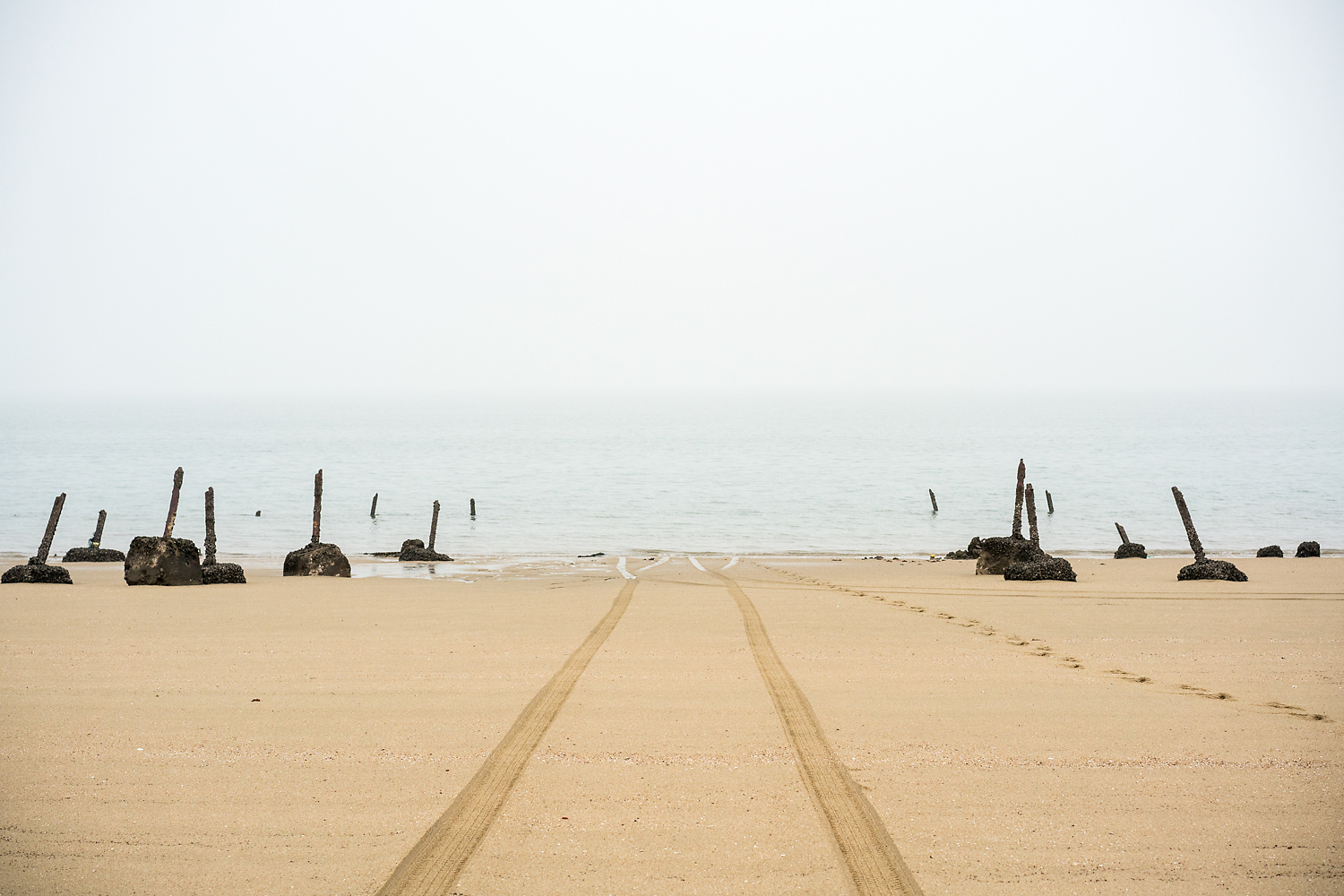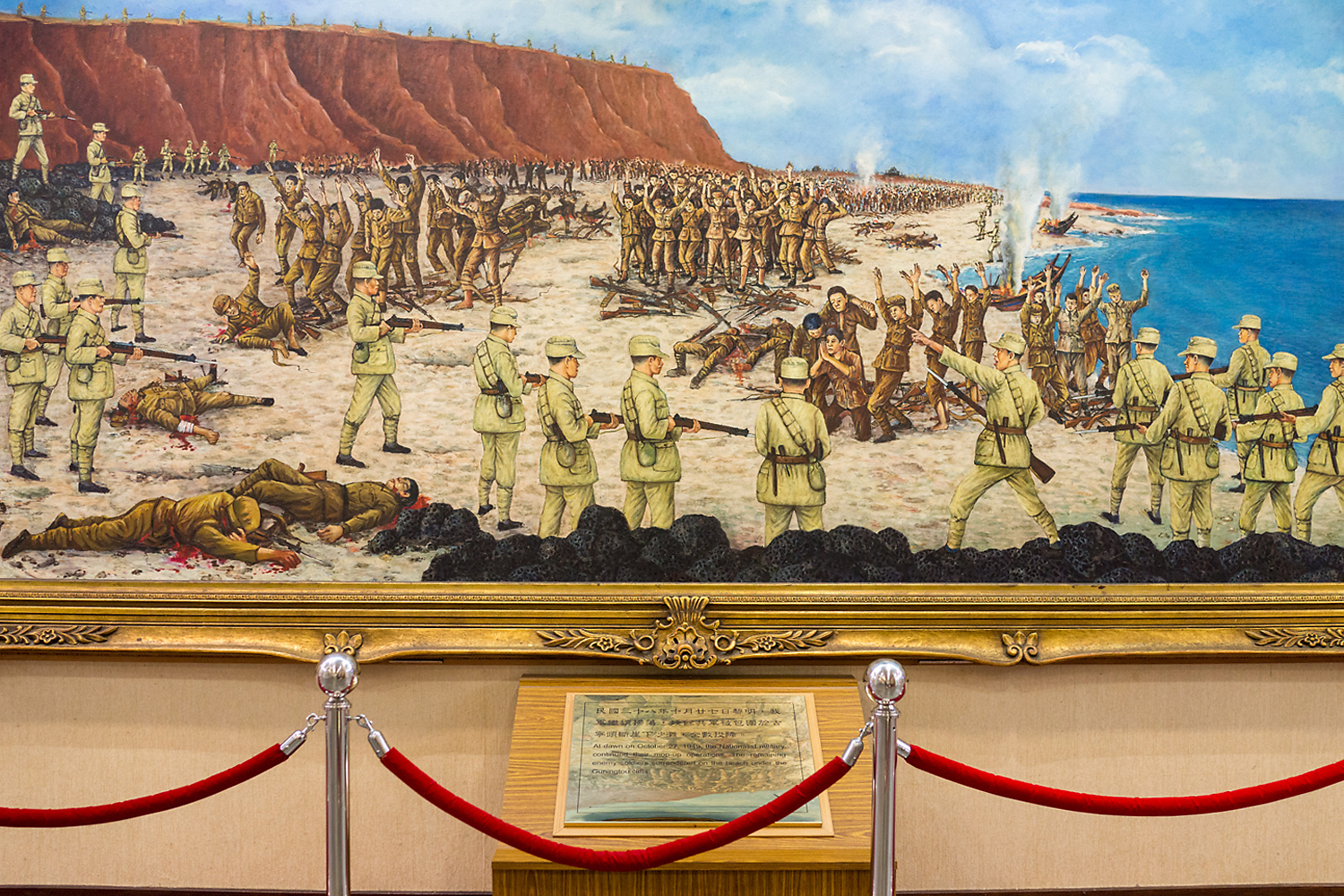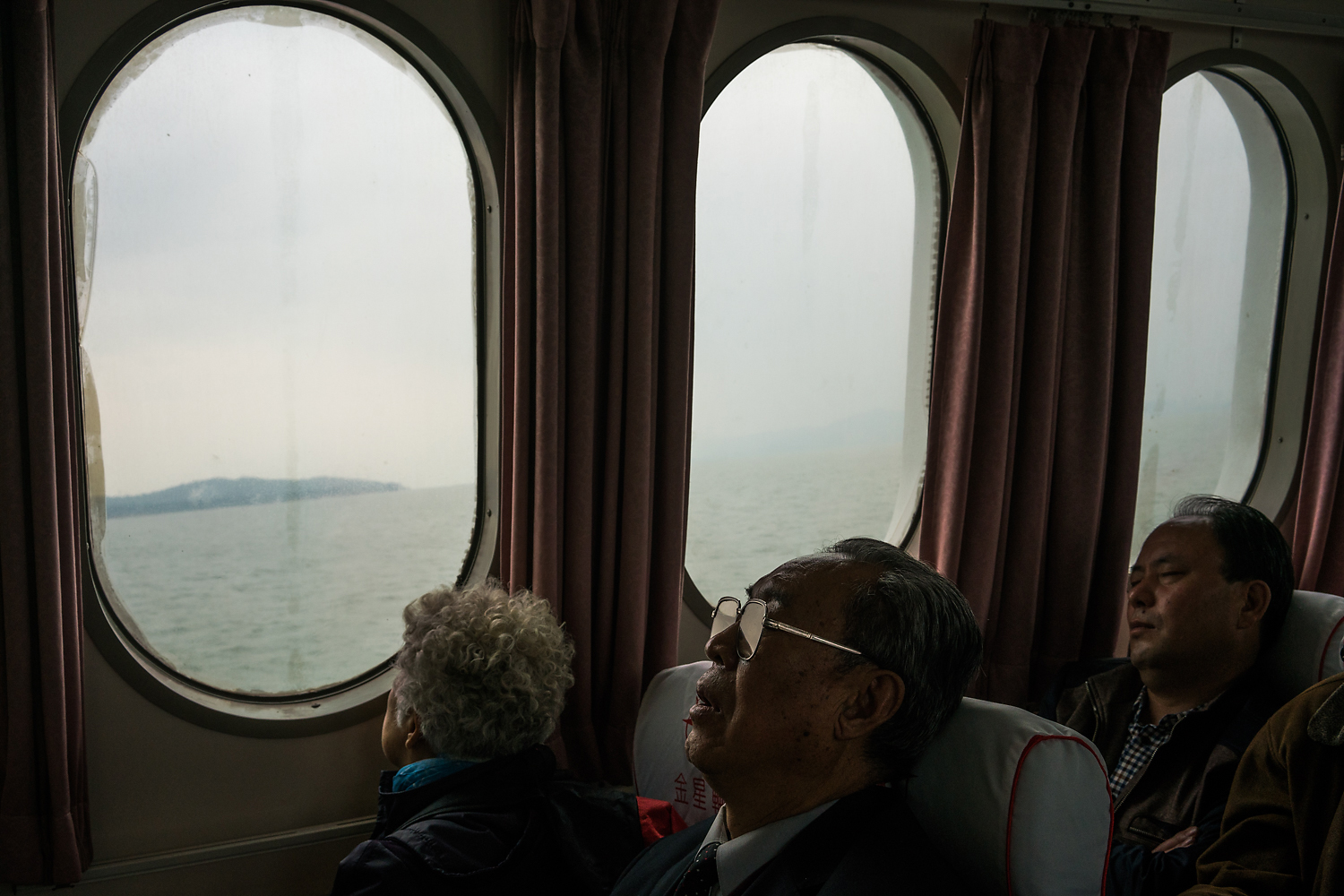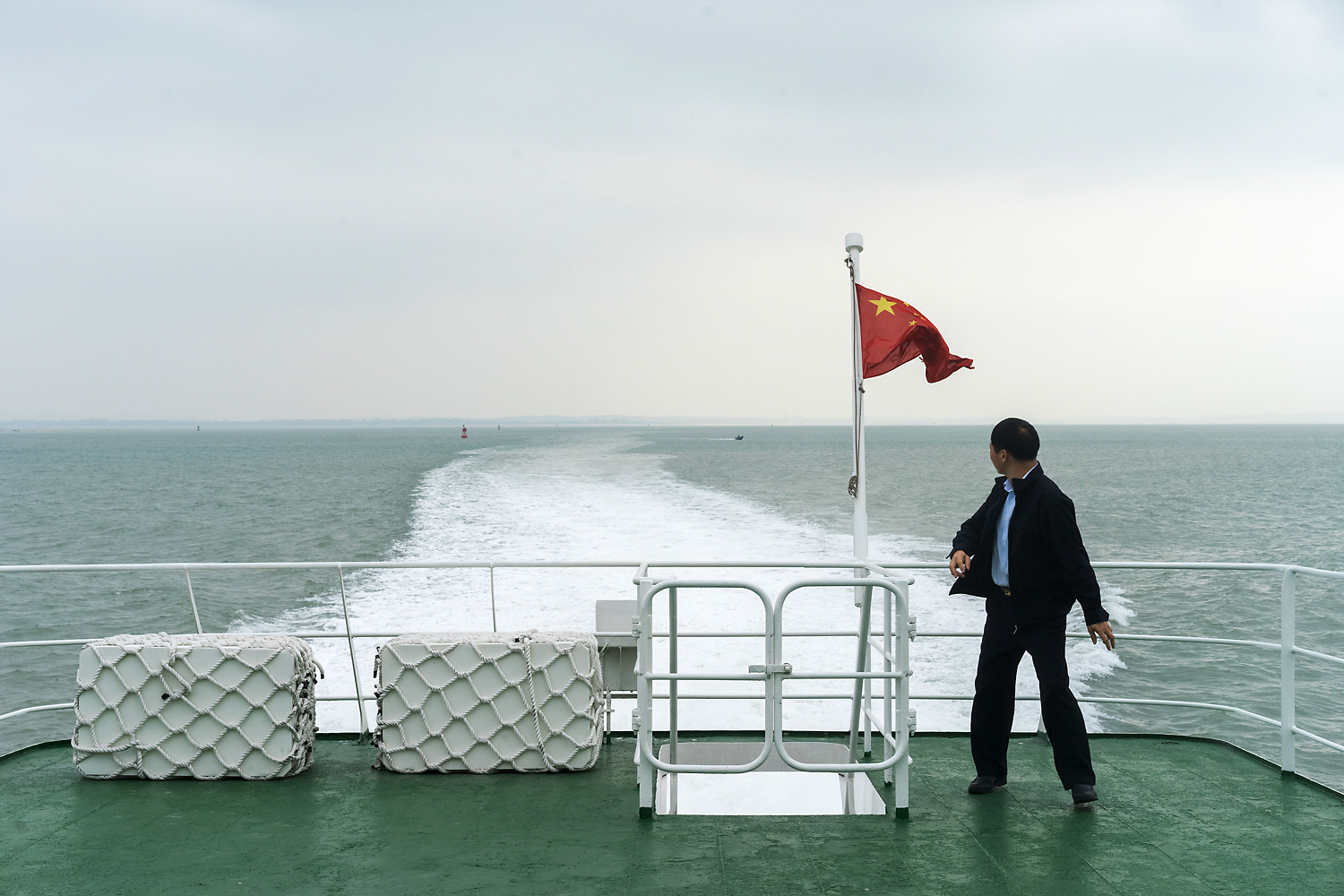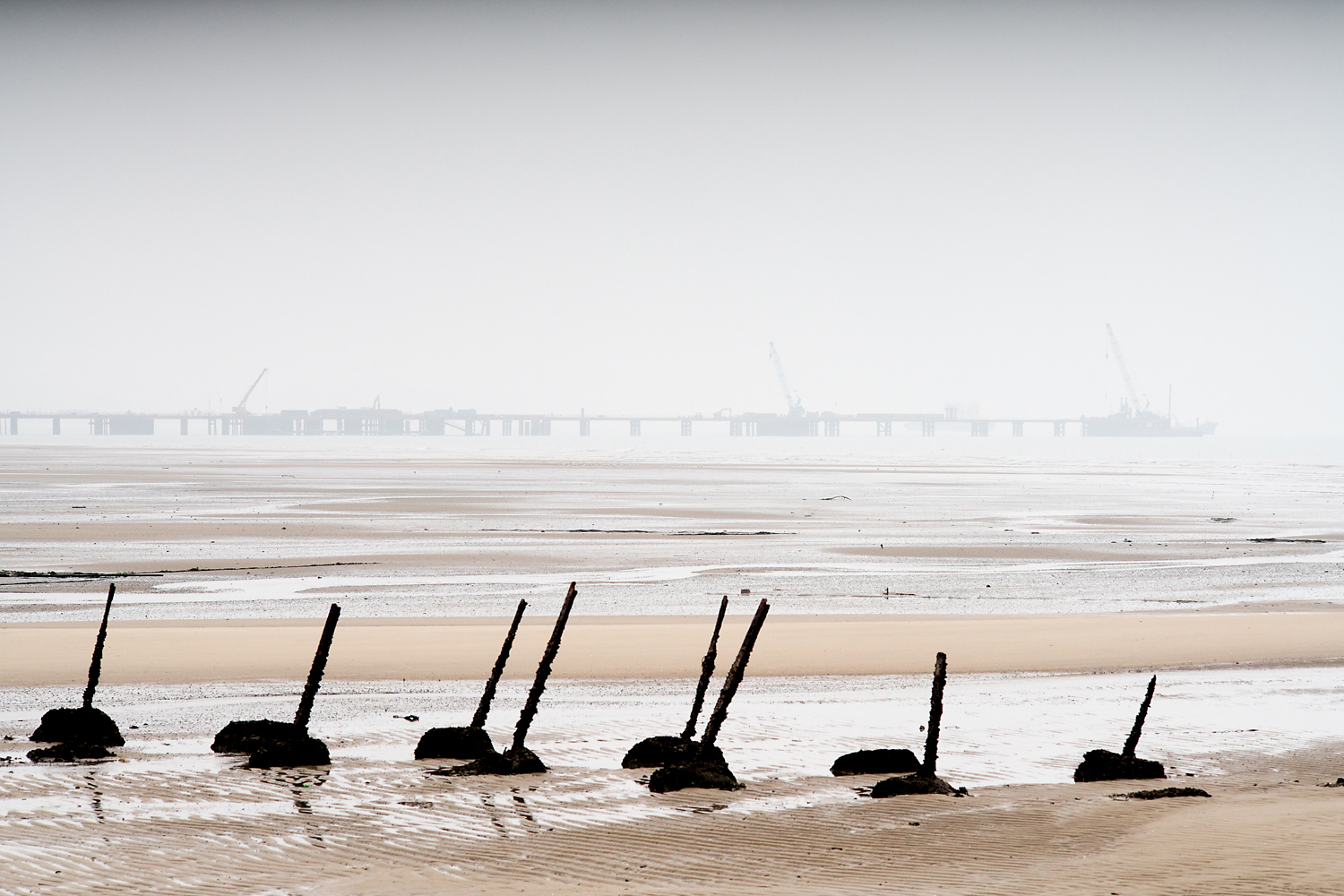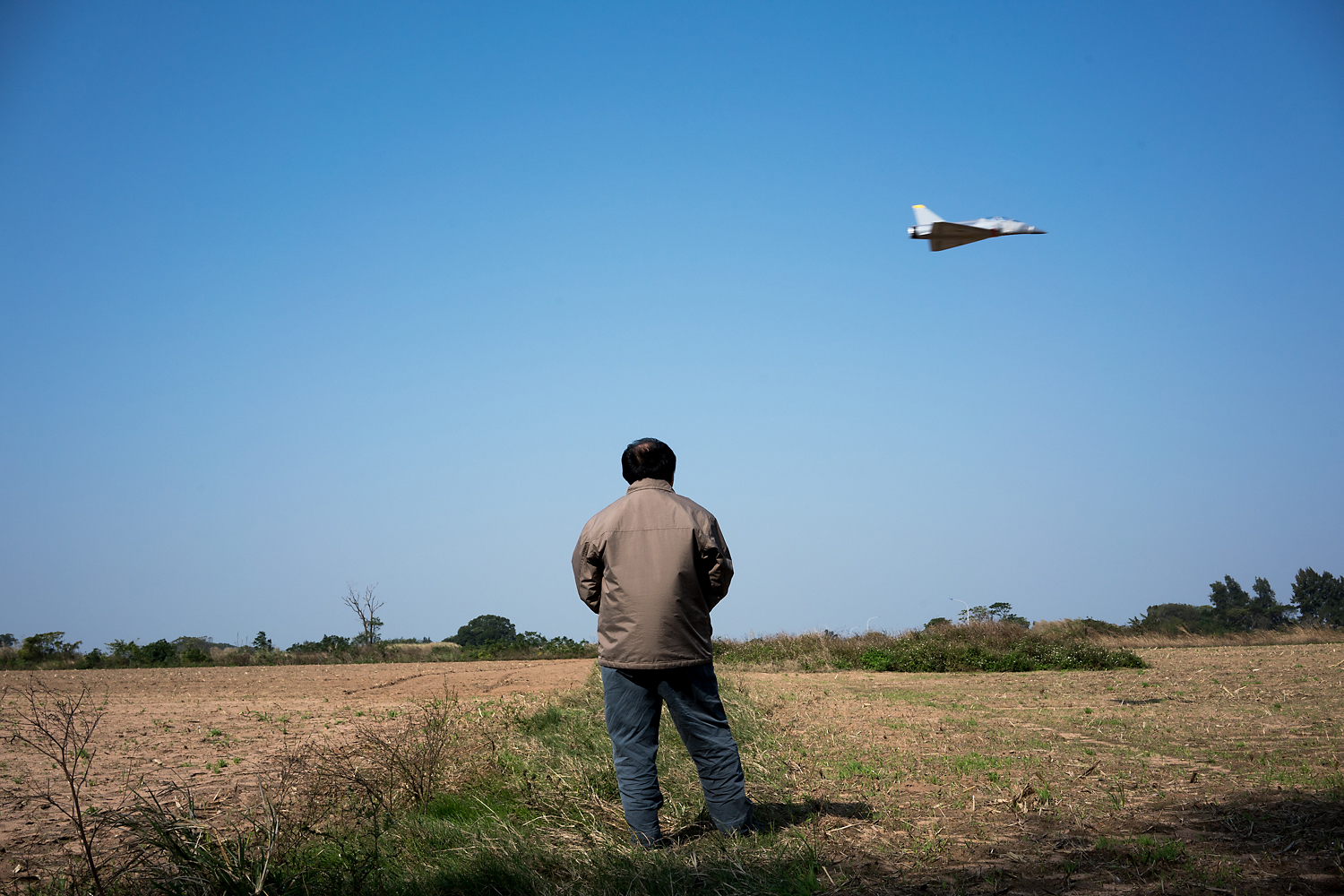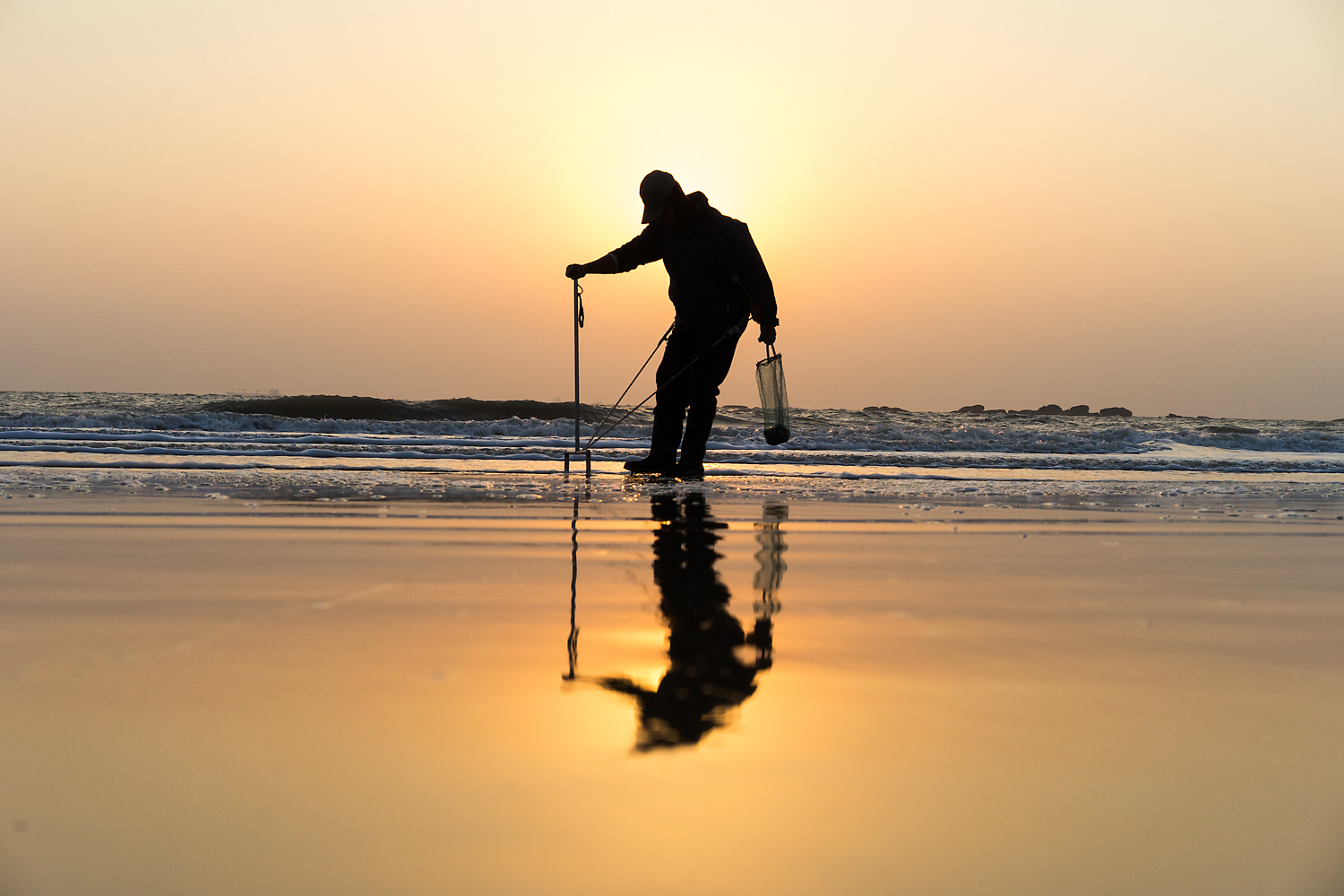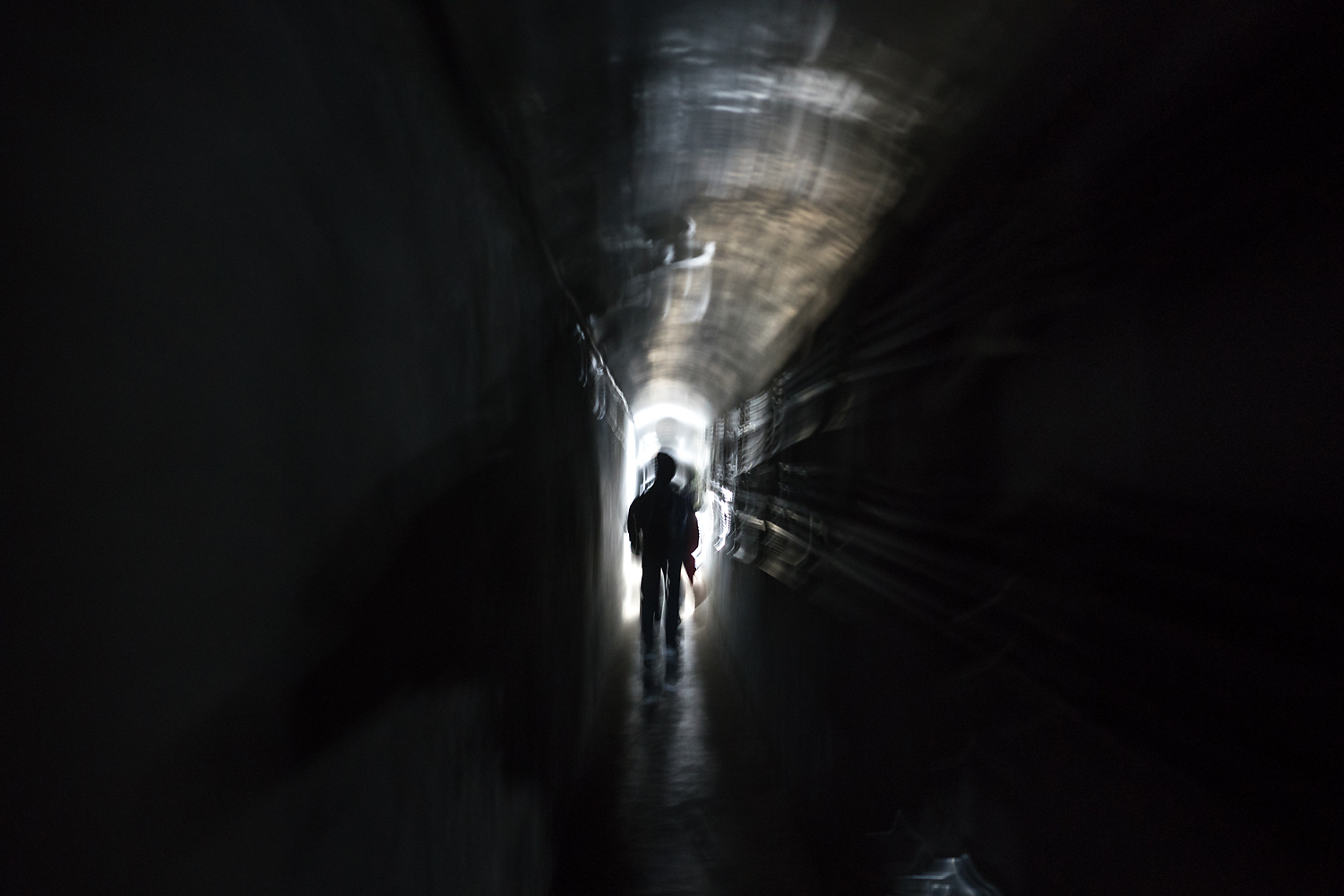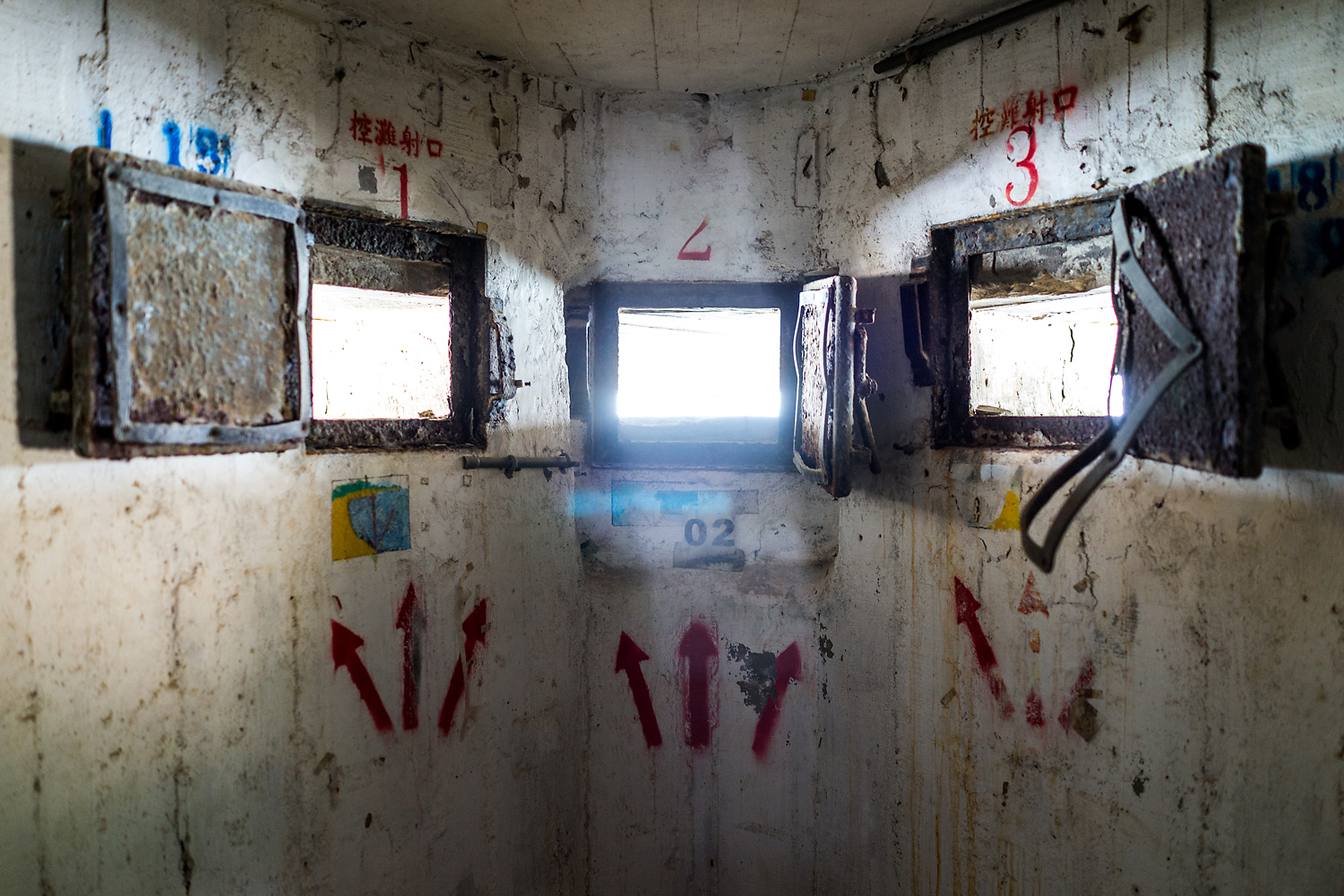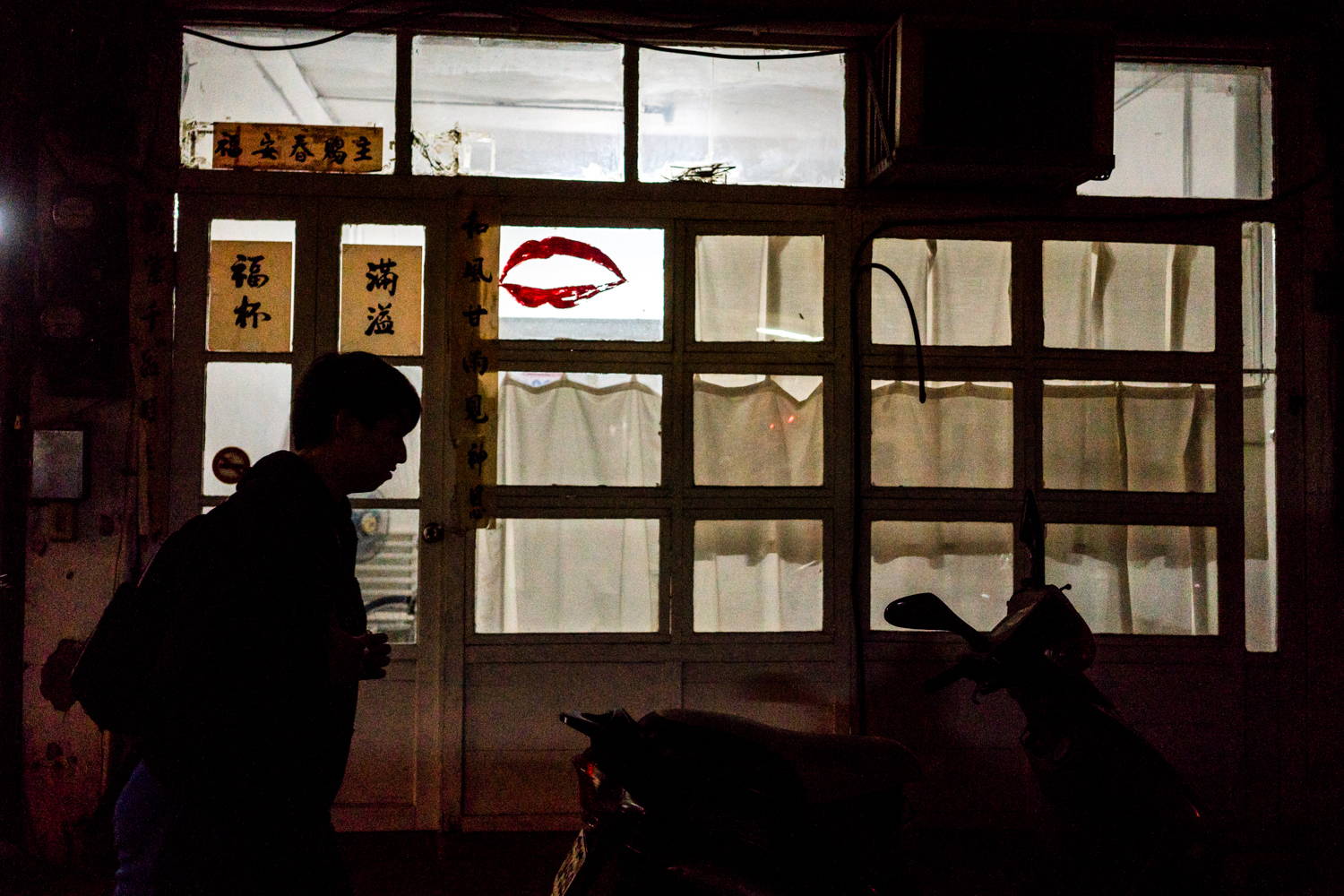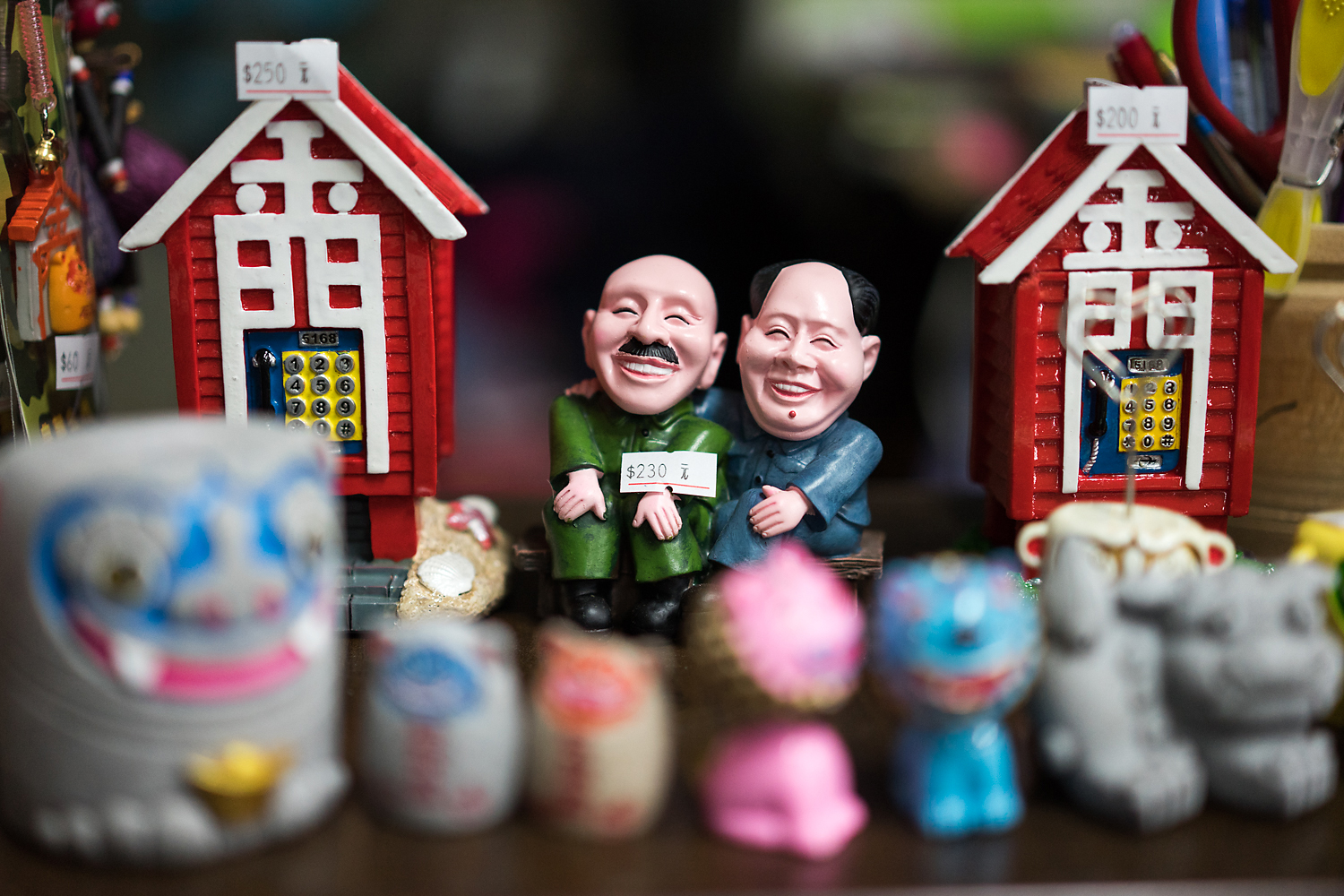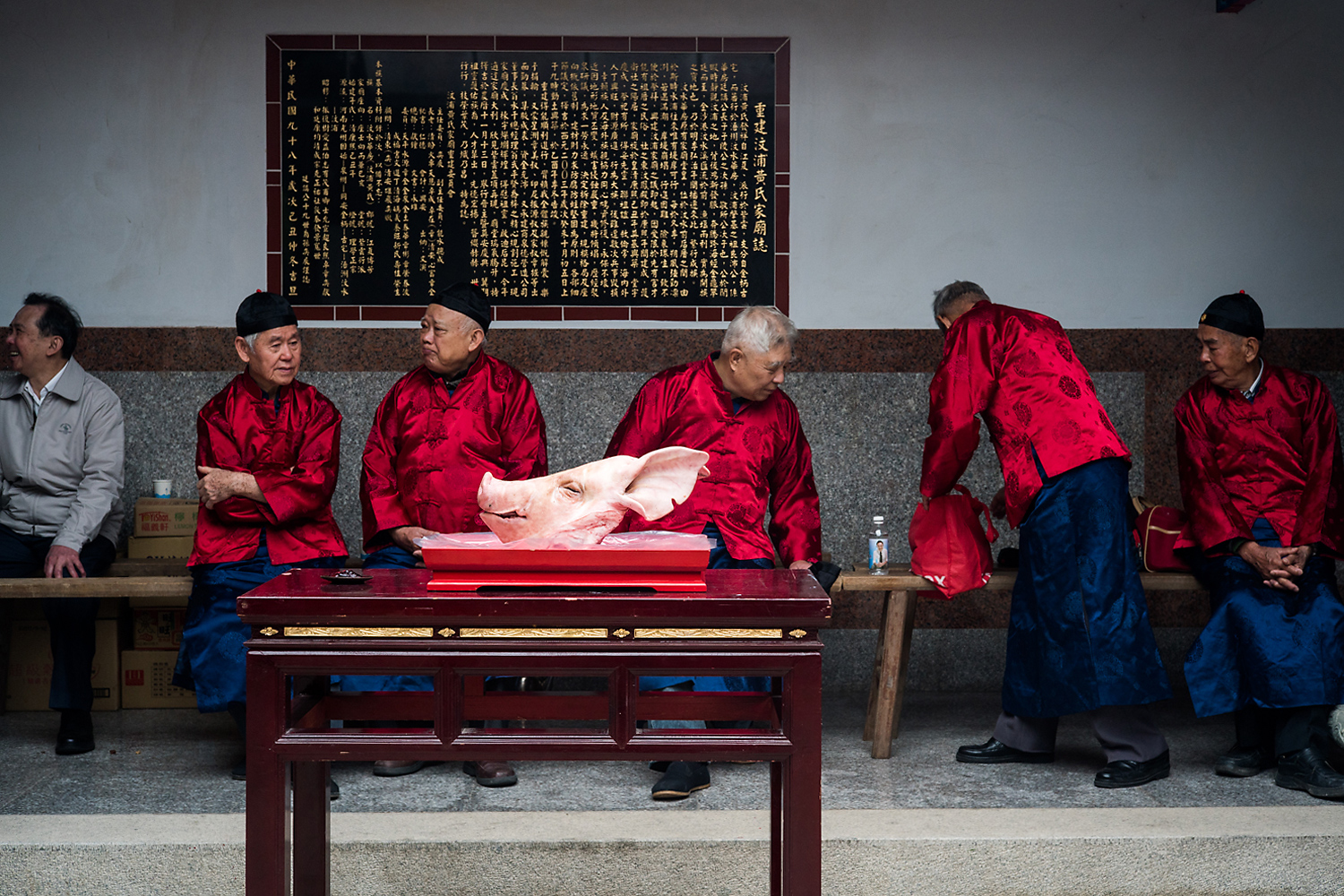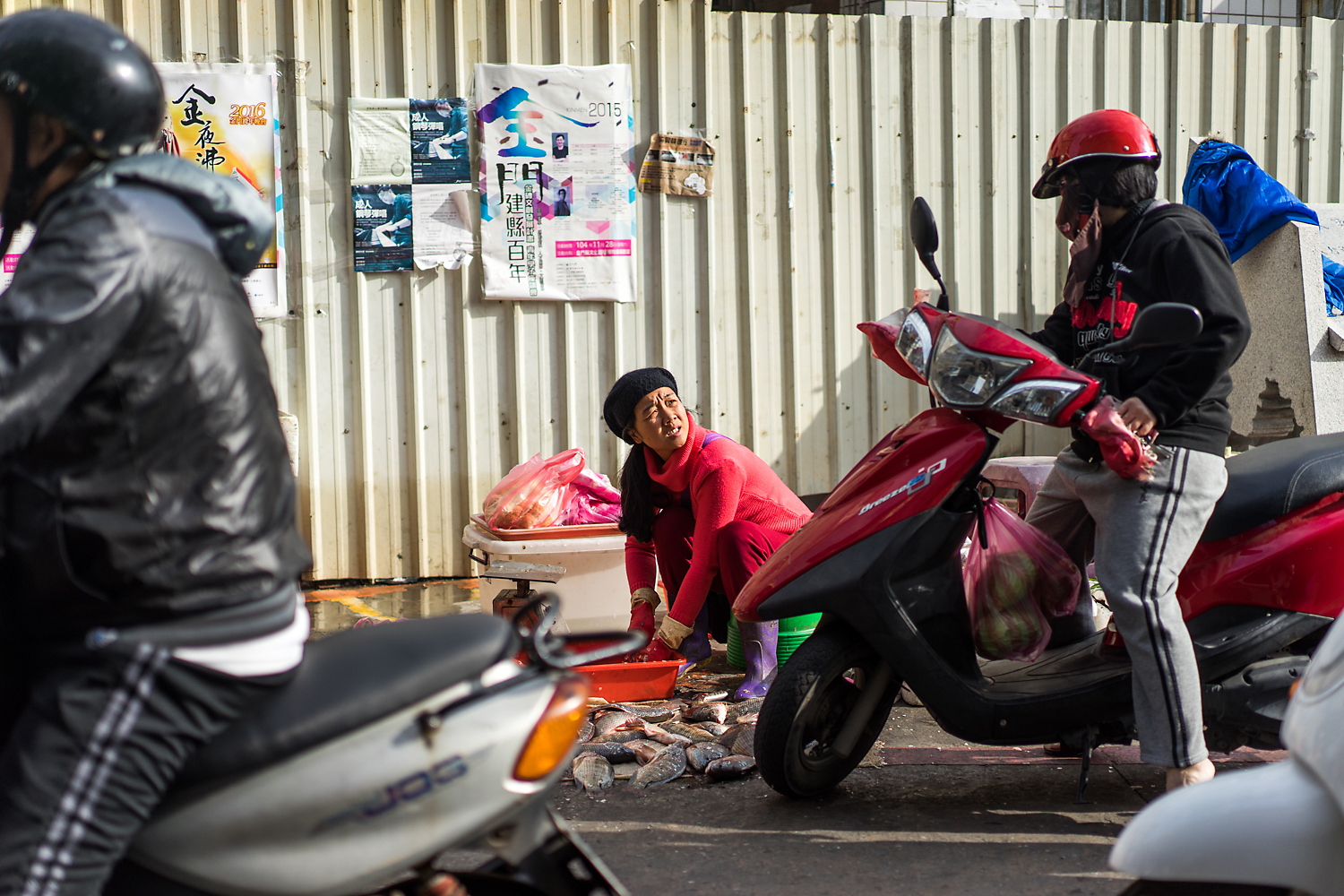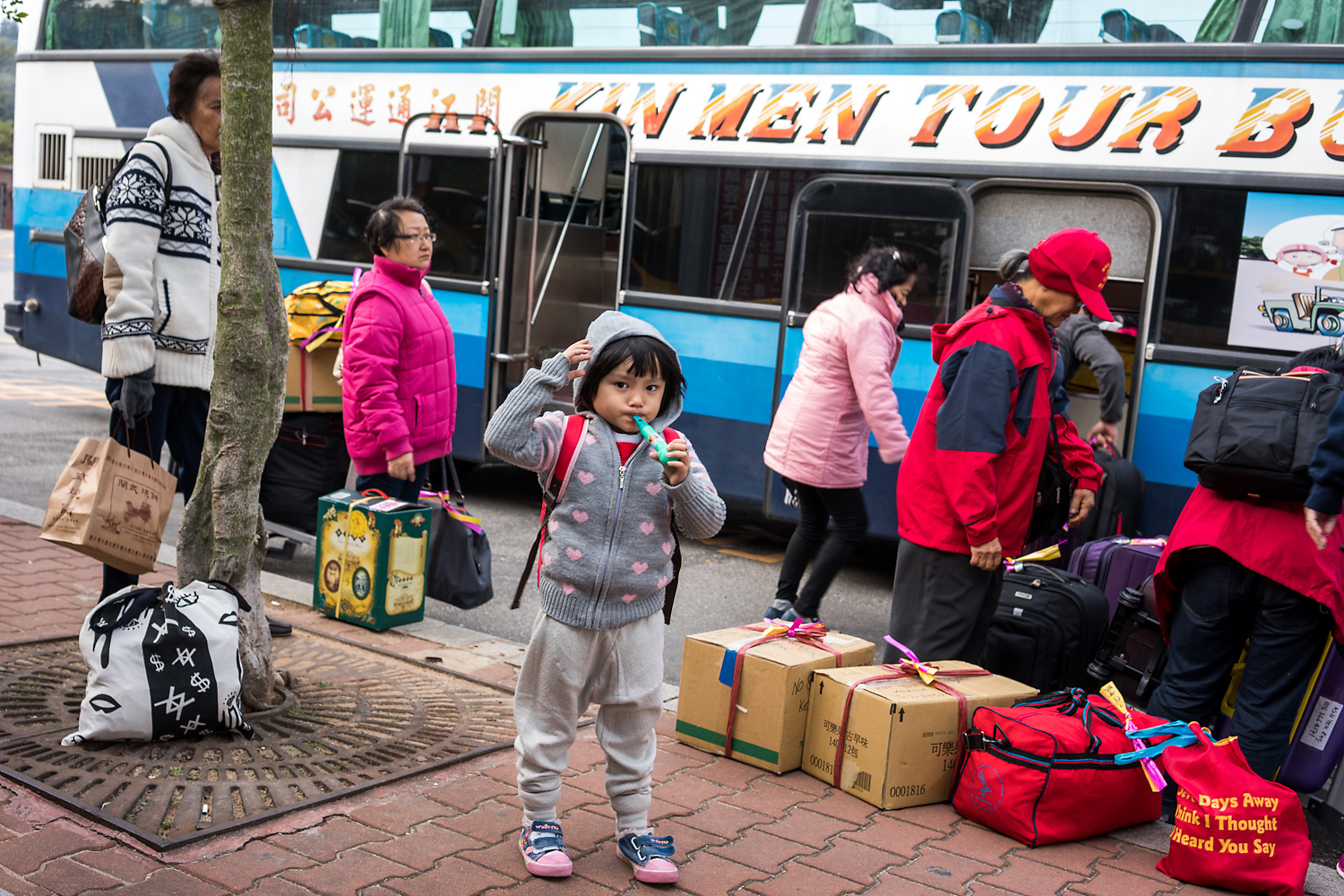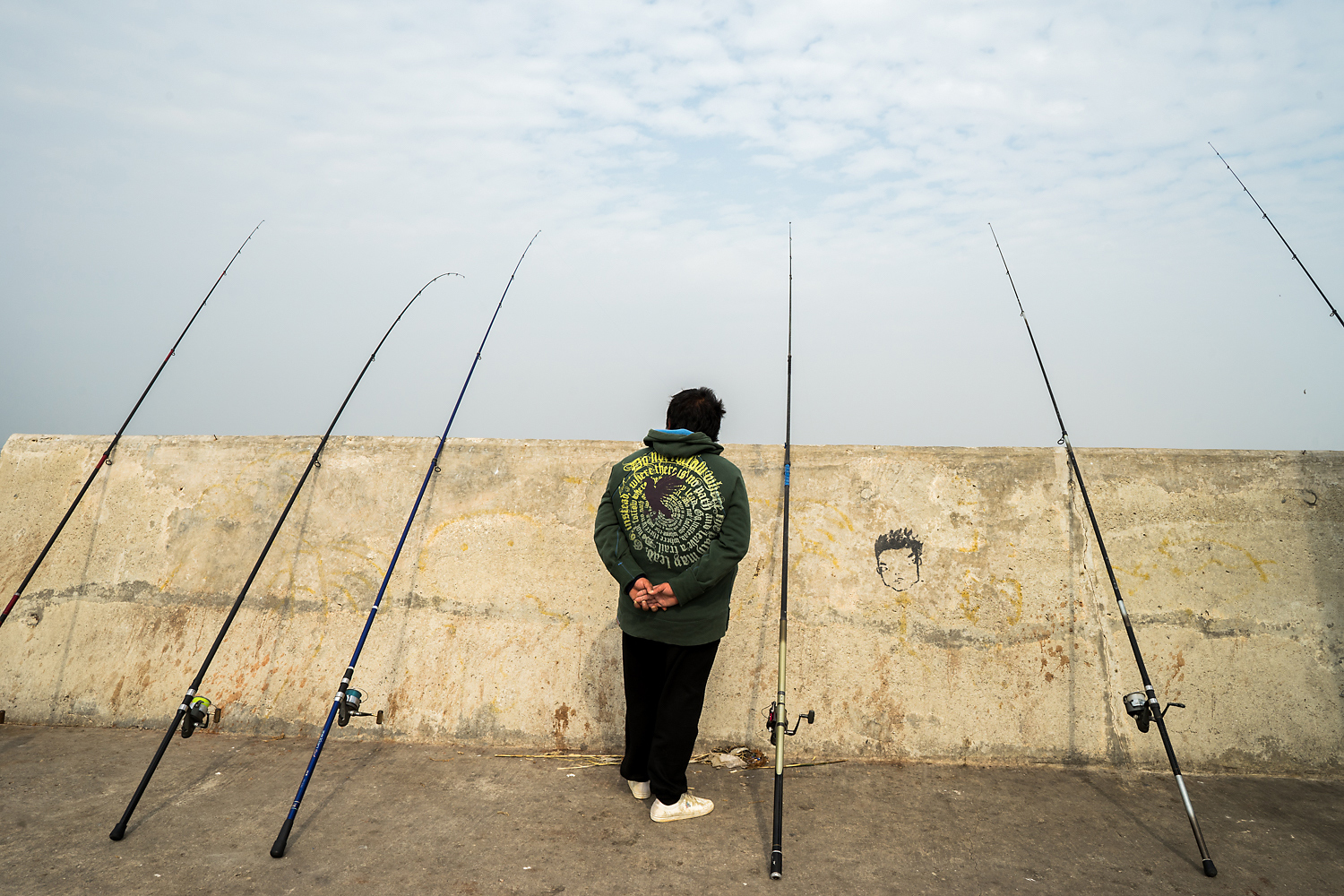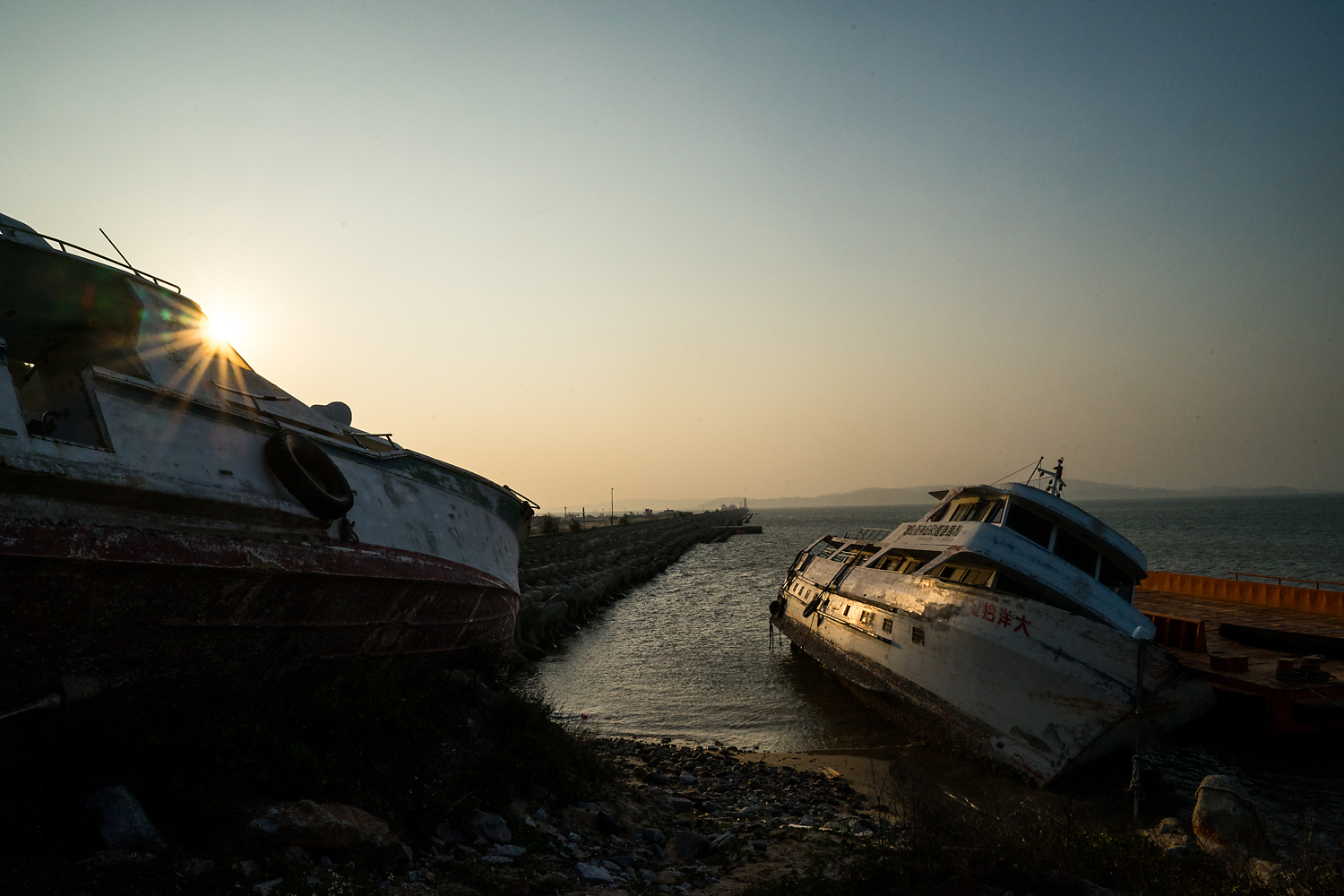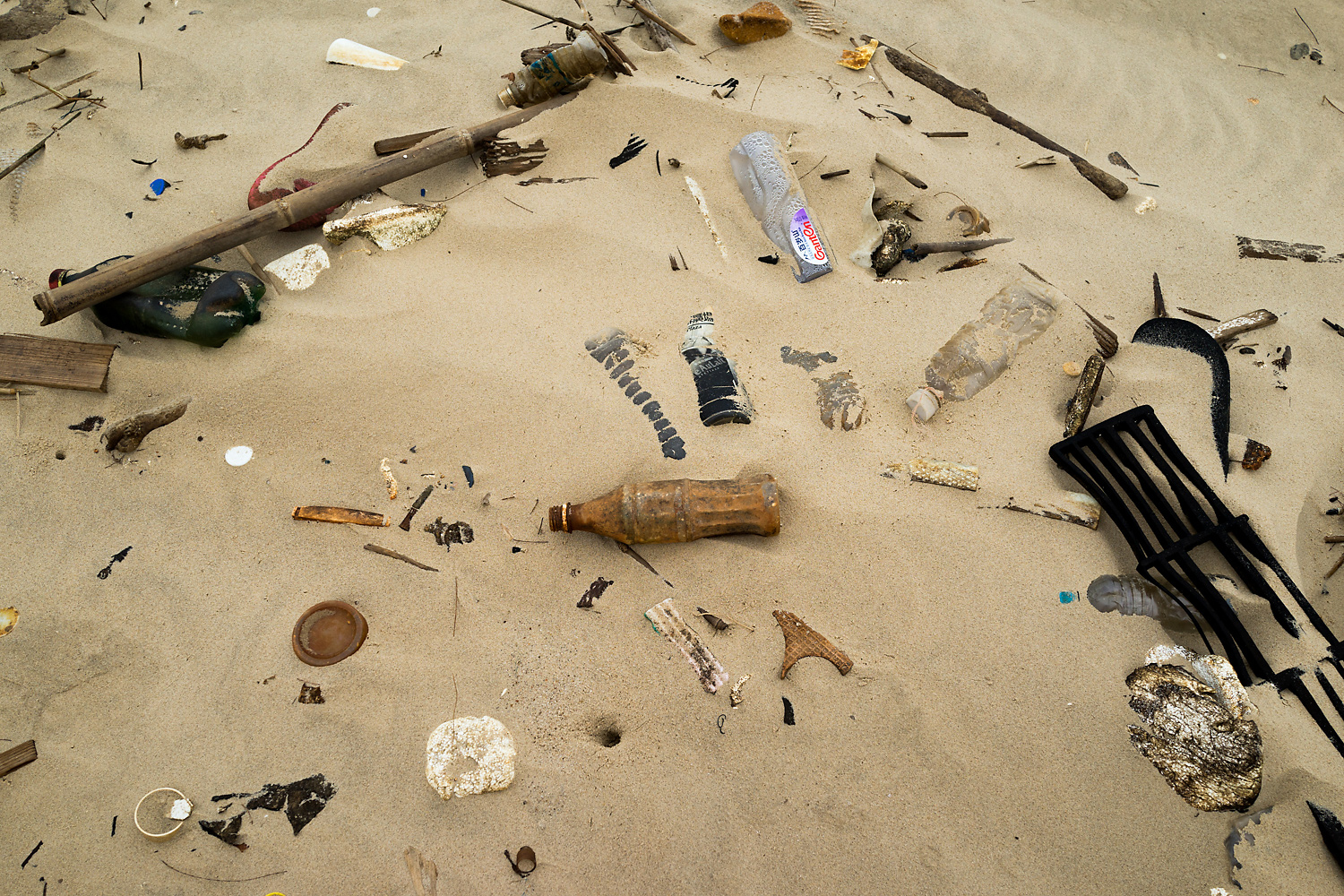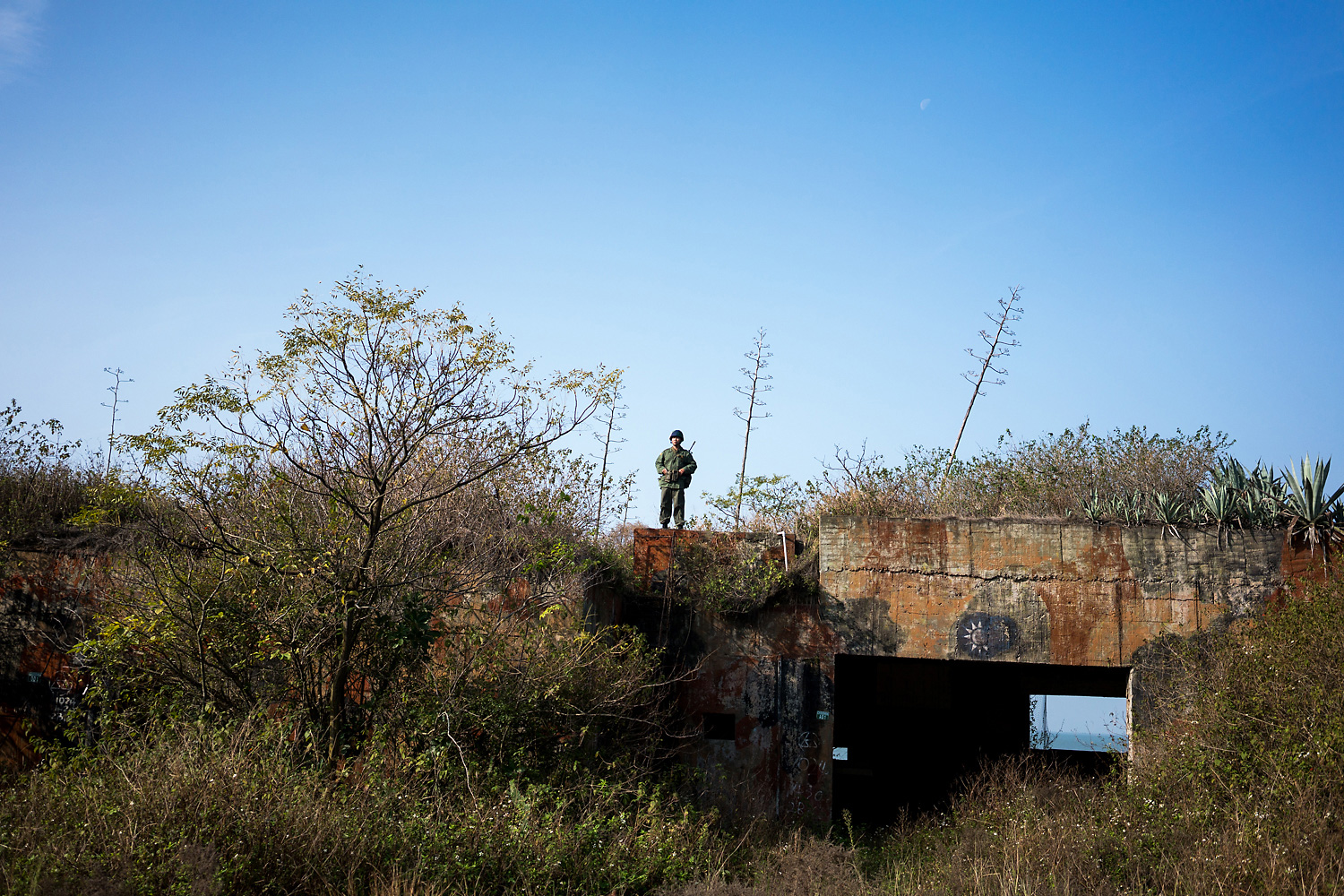A Cold War Island Thaws
New Beginnings for Kinmen
Mounds of sand sit beneath a row of pile drivers on Dadeng Island, where the Chinese city of Xiamen is building a new airport on reclaimed land.
Syril Hung sighs, awe-struck by this scene. The retired editor is looking through a pair of binoculars from the Mashan Observation Station on Kinmen, a nearby island that belongs to Taiwan. On a clear day like this, we can see sand-dredging barges working non-stop in the two-kilometer stretch of open water that separates the two former Cold War rivals.
Breaking a long silence, Hung says: “My heart is heavy. It feels like they are getting closer and closer. This is the sadness of living next to a big country.”
For decades, Kinmen has grappled with being the part of Taiwan closest to mainland China; nearer than it is to Taiwan, the island that has been self-governing since the end of World War II but which Beijing regards as its own. Kinmen is a 30-minute ferry ride from China, but an hour’s flight from the Taiwanese capital of Taipei.
Kinmen, all of 153 square kilometers, bore the brunt of bloody battles in October 1949 when the Nationalist Guomindang (KMT) soldiers based in Taiwan beat back the Communist People’s Liberation Army, keeping the island in KMT hands.
In the years that followed, Kinmen was a military base where the Taiwanese leader Chiang Kai-shek stationed much of his army to prepare to retake the mainland. The island, which is also known as Quemoy, suffered numerous small incursions, 20 years of shelling by China, and decades of direct military rule (1949-1992) from Taiwan. During a six-week artillery barrage in 1958, 500,000 rounds of mortar rained down on its tiny landmass.
At the height of the Cold War, it was seen as a frontline to hold. The United States moved its warships into the Taiwan Strait in 1950 to prevent the Communists on the mainland from launching an invasion. Over the past decade, however, relations have relaxed, with ferry services plying the narrow strip of water between Kinmen and Xiamen every half hour, and there is a constant flow of people and trade in both directions. In an unspoken arrangement to keep those waters calm, ferries from each side lower their flags when they reach the halfway mark.
But proximity continues to create new discomforts. Mainland China is so close that its smog blows over to otherwise-pristine Kinmen, which has almost no industry but now experiences grey skies (during my visit there, the PM2.5 air quality index readings reached over 100 at times). On bad days, Kinmen residents complain about the pollution and about the influx of Chinese tourists who have become a key driver of the local economy, flooding Kinmen every weekend to sightsee and shop at duty free stores for their favorite luxury products, baby formula, facial masks, cosmetics, and liquor. “We want them to come,” says National Quemoy University Professor Liu Mingfeng, “but not too many of them.”
Other residents yearn for more Chinese tourists, investment, and the completion of a long-discussed bridge linking Kinmen directly to China.
A middle-aged driver said: “I can’t wait for more mainland Chinese to come buy up land here. That’s the only way we will be able to develop.”
Features
07.12.16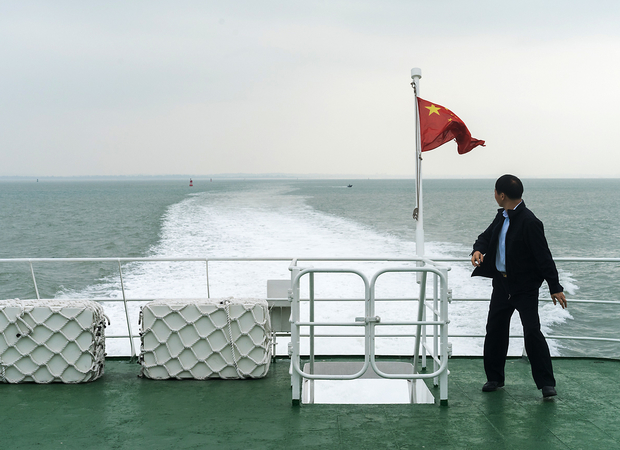
You Ask How Deeply I Love You
Locals and politicians speak of the great “sacrifices” Kinmen and its people have had to endure because of its role as the frontline, missing out on the decades of rapid development that much of the rest of Taiwan experienced. Kinmen has remained an economic backwater, with low-rise buildings and quaint old streets keeping it in a sort of time warp. Although seemingly remote and marginal in Taiwanese politics, Kinmen’s important place in cross-strait relations saw then-outgoing President Ma Ying-jeou and recently-elected President Tsai Ing-wen make it a key stop during their campaigns ahead of Taiwan’s elections in January 2016.
Originally from the same Fujianese ancestry as mainland Chinese across the strait, Kinmen islanders, for the most part, are less Beijing-skeptic than people on the Taiwanese mainland 100 miles away. But Kinmen locals see the looming presence of China on their shores, and even under the recently elected pro-independence Democratic Progressive Party government, there is little to hold back ever-closer ties between the two sides. Kinmen has evolved from being a military frontline to, in recent years, the test site for many cross-strait political experiments. It is where China-Taiwan postal and transportation connections were first offered and now there’s an annual swim across the Taiwan Strait over which bombs were once lobbed. Kinmen is also due to get water piped from China’s Fujian province soon.
But the traces of history and military tension are never far from the surface in Kinmen. Beneath the island is an intricate maze of tunnels blasted open for villagers to hide in during air raids, some dug large enough for supply boats. Although the presence of Taiwanese soldiers has dropped from 100,000 at its peak in the 1950s to just 3,000 now, old military vehicles, bunkers, forts, and shells litter the island, evoking a time and tension past.
At low tide on the northwest coast where some of the worst battles took place in 1949, row upon row of barnacle-covered iron spikes pierce the sand, placed there to deter the “water ghost” commandos sent from China to conduct sabotage at the height of cross-strait tension. But whether at low or high tide, just beyond the horizon, Xiamen’s spectacular growing skyline is in clear sight.
As a fishermen tugs at his nets to check on his catch early one morning, a powerful ferry speeds past behind him, heading towards the shimmering skyscrapers on the other side.




